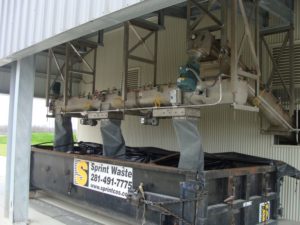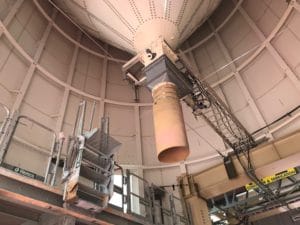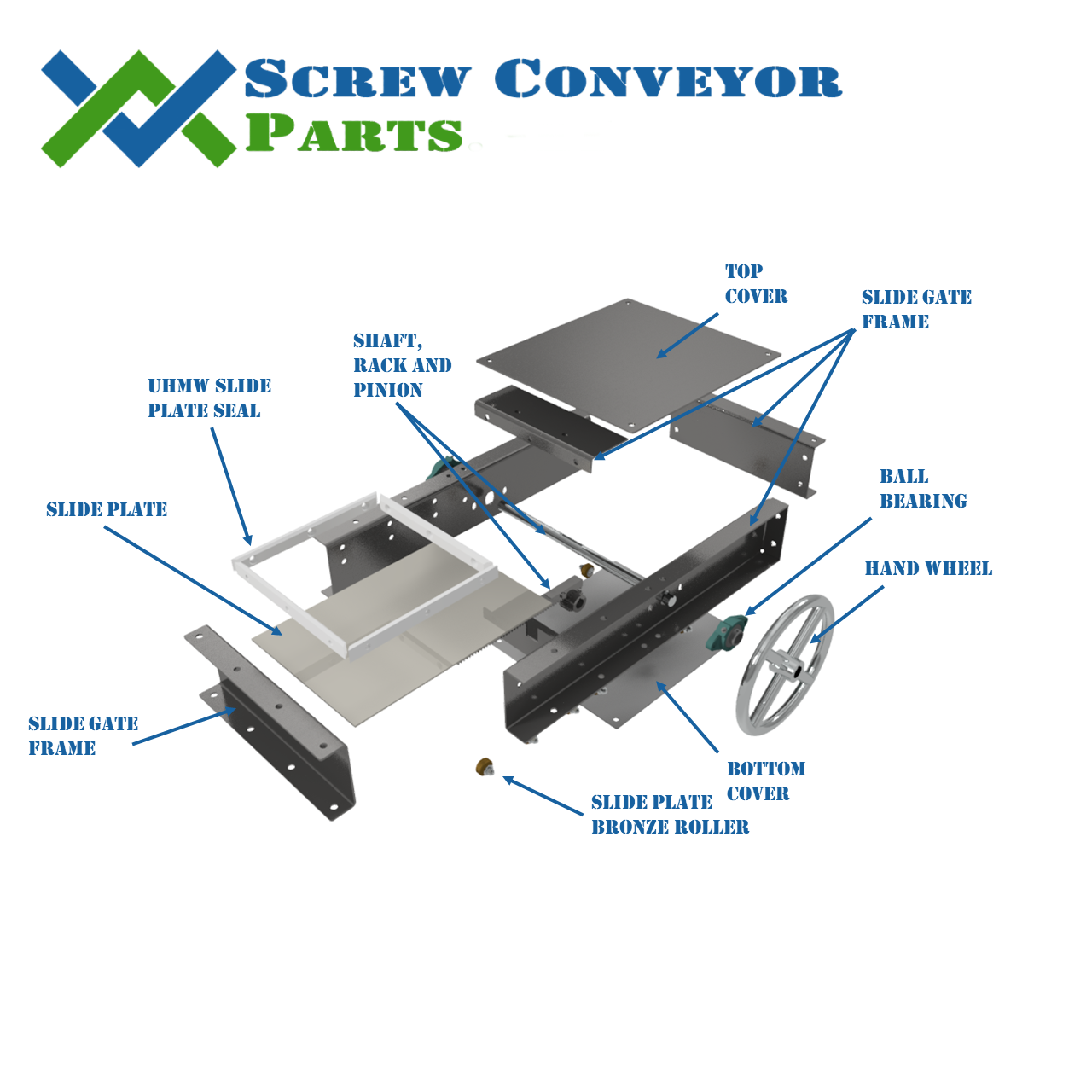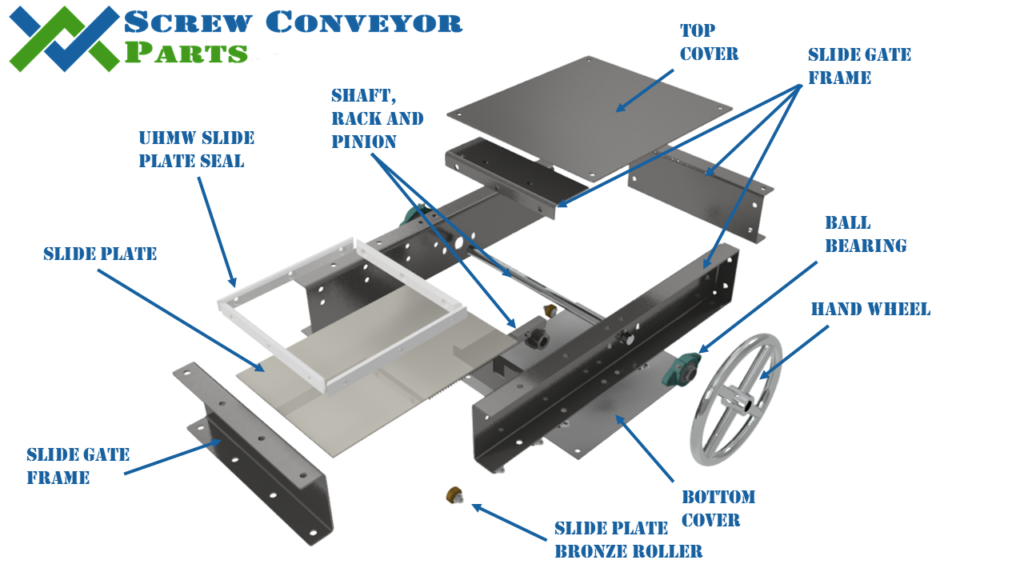
What is a slide gate? – This seems simple enough but is probably worth reiterating what makes a slide gate a slide gate. In simple terms a slide gate is a frame with a plate that slides back and forth to cut off flow of material from one side to the other. In more complex terms a slide gate is used in hundreds of applications and can be customized in many ways to fit the exact application it is intended to be used in.
Is this a gravity or pressure flow? – This question says a lot about the design of the slide gate. Gravity means the material is only being pulled by gravity like under a silo or conveyor. Pressure means the material is being conveyor in a pressure system like a pneumatic conveyor or a pump.

What is the bulk material going through the gate? – This can be virtually anything and will affect the frame and seal design heavily. A bulk material like grain can use virtually any seal design while a wet sludge will need a specialty seal designed for liquid. A food grade product has a its own considerations when it comes to contaminants and bacterial growth.
What material of construction is needed? – While most dry applications use carbon steel as the material of construction, caustic, acidic, or food products might need stainless steel or aluminum.
How is the slide gate going to be actuated? – The most common actuator is a pneumatic (air) cylinder but electric, manual with a handwheel or hand crank and hydraulic are all used in various applications. If the gate needs to be able to partially open to control flow out of a hopper or silo, then an electrical actuator is the best choice because it can be fitted with an encoder to allow the slide plate to stop at any position.

Is there a head load above the slide gate? – When a slide gate is under a hopper or silo there is force on the plate from the material above. This downward force makes the slide plate harder to open and close. SCP has a proprietary calculator to determine this force and select an actuator to overcome it.
Beyond the questions above, the opening size is important, the physical space the slide gate has to fit into and a host of other considerations to custom design a slide gate to allow for years of maintenance free operation. SCP offers various standard slide gate designs in 7″ – 25″ square openings in both pneumatic and manually actuated versions. If you need something custom contact us or email us at [email protected]



